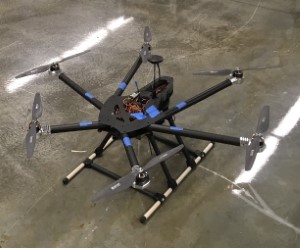
VADER: A Hardware and Simulation Platform for Visually Aware Drone Autonomy Research
Proc. SPIE 11758, Unmanned Systems Technology XXIII, 2021

Abstract
Low altitude Unmanned Aerial Systems (UASs) provide a highly flexible and capable platform for remote sensing and autonomous control. There are many applications that would benefit from an additional bird’s eye view, including mapping, environmental reconnaissance, and search and rescue to name a few. An autonomous (or partially autonomous) drone could assist in several of these scenarios, freeing the operator to focus on higher-level strategic planning. While numerous commercial drones exist on the market, none truly provide a flexible foundation for vision guided autonomy research. Herein, we propose the design of a physical UAS platform, called VADER (Visually Aware Drone for Environmental Reconnaissance), and an accompanying simulation environment that addresses many of these tasks. In particular, we show how Commercial Off The Shelf (COTS) hardware and open source software can now be combined to realize powerful end-to-end UAS research solutions. The beauty of unifying these factors is accelerated prototyping and minimal time to migrate and test in the real world. This article outlines VADER and case studies are presented to demonstrate capabilities.
Media